This article was co-authored by wikiHow Staff. Our trained team of editors and researchers validate articles for accuracy and comprehensiveness. wikiHow's Content Management Team carefully monitors the work from our editorial staff to ensure that each article is backed by trusted research and meets our high quality standards.
This article has been viewed 121,379 times.
Learn more...
Originating in France, parkour is a physical sport that requires participants to get from one point to another by clearing “obstacles,” like walls, fences, railings, signs, buildings, and rooftops. There are a multitude of methods for getting through a “course,” like running, climbing, and swinging, but one of the most common is vaulting, where participants swing or jump over items in their path. Though there various ways to vault, one of the most complicated is the dash vault.
Steps
Performing a Dash Vault
-
1Run towards the obstacle and start your jump. Approach the obstacle perpendicularly and straight on. Make sure you are also maintaining speed so you can clear the obstacle without any issue. The point of a dash vault is to skim over the top of an obstacle, rather than the up-and-over of other types of vaults.
- Your speed will depend on the depth or width of the obstacle you are vaulting over. For example, if it’s a thin wall, you won’t need as much speed. However, if it’s a thicker surface, you will need to go faster to clear it.[1]
-
2Kick your legs forward when jumping over the obstacle. The trick is to bring one leg up first and then follow with the other quickly. This gives the illusion that both legs are coming up together. It’s important here to take off with your dominant leg or the one you are more comfortable with.[2]
- Imagine the way an athlete clears a hurdle; bend your dominant leg in a similar manner, slightly at the knee. Then, when you kick this leg forward, your other leg will naturally follow your momentum and you can bring it forward.
- Make sure you are leaning back when jumping. Otherwise, your chest will prevent you from bringing your leg up for enough to clear the obstacle.
Advertisement -
3Put your hands behind your back. Wait until your posterior has cleared the obstacle before putting your hands down on the edge of the item you're vaulting. If you started your jump feet-first like you were supposed to, your arms will be behind you anyways.
-
4Push yourself off and keep running. Make this a near seamless movement. You want your body to continue past the obstacle without losing speed. This way, when you touch back down, you can keep running without stopping or slowing down.[3]
- Actively push the obstacle away from you, so your arms are stretched out behind you and the rest of your body is pushed forward.
- Then land one foot first, before the other, so you can go right back into a run.
-
5Practice over and over. Don’t feel discouraged if you can’t perfect a dash vault immediately. It’s one of the most difficult vaults in parkour and should be taken slowly. However, after you’ve done it repeatedly, it will become second nature.
Preparing Your Body and Mind
-
1Build up your core body strength. Like most of parkour, performing a dash vault takes a lot of coordination and body strength. In order to get your body into the proper L-position for this dash, you need to make sure you have a basic foundation of core body strength. To do this, practice L-sits, butt scoots, leg lifts, and knee raises.[4]
- The L-sit, in particular, will help you build the needed body strength to successfully hold the L-shape of a dash vault.
-
2Work on your flexibility. Outside of core strength, flexibility plays a large role in performing a dash vault. You need to be able to get both your legs out in front of you while “jumping” over an obstacle. To improve your flexibility, try practicing some basic yoga, pilates, or taking a dance class. Also stretch regularly for 10-15 minutes every morning and evening.[5]
-
3Practice with progression steps. The last thing you need to conquer before you can dash vault is the mental aspect. You have to have the confidence in your ability to clear the obstacle in the correct fashion. To do this, you want to break the dash vault into steps and go through them slowly.[6]
- For example, run up to the obstacle and jump on top of it. Then, sit down and place your hands close to the edge. Once in this position, kick your legs forward. Do this over and over until you feel comfortable with each step.
- You can also start with a lazy vault and then try to straighten your legs out.
Community Q&A
-
QuestionShould I swing my legs up around the obstacle or just over, touching my chest?
 Community AnswerIf you watch the video below, you can see that you start with a lazy vault (running close to parallel to the wall and jumping over by swinging your legs up around the obstacle and with one hand for support) then increase the angle until you're running straight at the wall. Then you jump forward and up by kicking off the ground with your legs/knees close to your chest (straight up) with no hands and push yourself off the obstacle's top with your hands to help you clear it. Lazy Vault (for beginners) = up around the obstacle. Dash Vault = up over the obstacle.
Community AnswerIf you watch the video below, you can see that you start with a lazy vault (running close to parallel to the wall and jumping over by swinging your legs up around the obstacle and with one hand for support) then increase the angle until you're running straight at the wall. Then you jump forward and up by kicking off the ground with your legs/knees close to your chest (straight up) with no hands and push yourself off the obstacle's top with your hands to help you clear it. Lazy Vault (for beginners) = up around the obstacle. Dash Vault = up over the obstacle. -
QuestionCan I practice this over a sofa?
 Community AnswerDepends on the dimensions. Usually sofas won't be tall enough, but you can still practice. Make sure the section is also short enough, so you only have to worry about height.
Community AnswerDepends on the dimensions. Usually sofas won't be tall enough, but you can still practice. Make sure the section is also short enough, so you only have to worry about height. -
QuestionHow do I get better at jumping high?
 Community AnswerExercises like Plyometric box jumps can improve your jumping height, and so can squats.
Community AnswerExercises like Plyometric box jumps can improve your jumping height, and so can squats.
Warnings
- Watch if you go over a thin wall or something, that you don't miss the object with your hands... it could turn out badly.⧼thumbs_response⧽
- Be extra careful when performing dash vaults on rails; your hands might slip or not catch the rail at all and you may injure your tailbone.⧼thumbs_response⧽
- Always warm up to avoid stretches and similar injury.⧼thumbs_response⧽
- This move is dangerous. You can hurt your legs if kicking the obstacle when you fly too low. Then you also may fall on your buttocks or back.⧼thumbs_response⧽
- Make sure your feet are not dangling, or they might catch on the obstacle and you will land on your face.⧼thumbs_response⧽
- With any vault, you should always be careful not to catch something on the wall or rail, especially on high places, because you could go head first into the ground.⧼thumbs_response⧽
Things You'll Need
- Clothing for free movement and better effect.
- Good shoes that can absorb shock.
- Simple, cotton fingerless gloves are good for palm protection if you plan to jump craggy surfaces.
References
- ↑ https://www.youtube.com/watch?v=3X-27U0Pie4
- ↑ http://riders.co/en/parkour/vault-park/dash-vault/
- ↑ http://www.parkourtheory.com/move/Dash%20Vault
- ↑ http://www.benmusholt.com/tag/dash-vault/
- ↑ http://www.health.com/health/gallery/0,,20629237,00.html
- ↑ http://learnmoreparkour.com/how-to-dash-vault-tutorial/
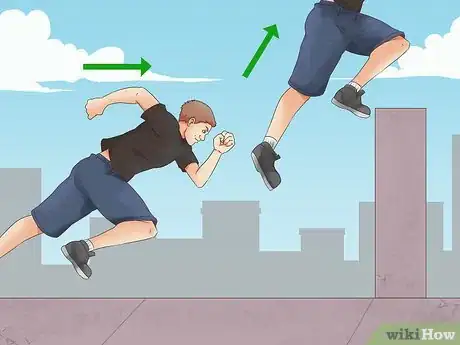

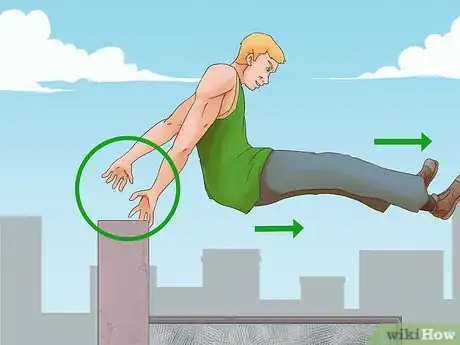
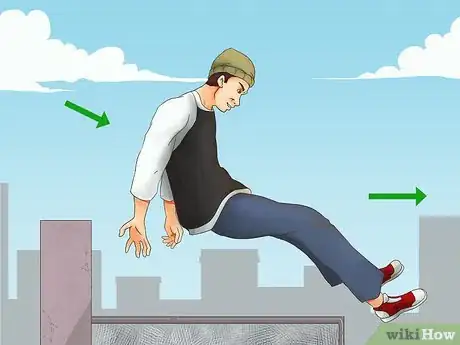
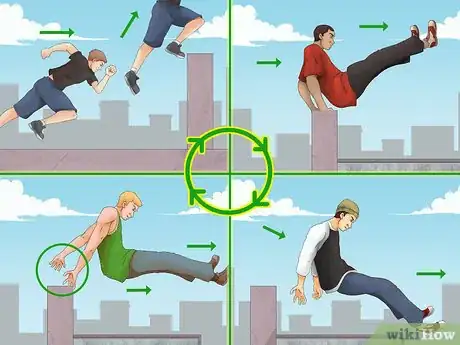
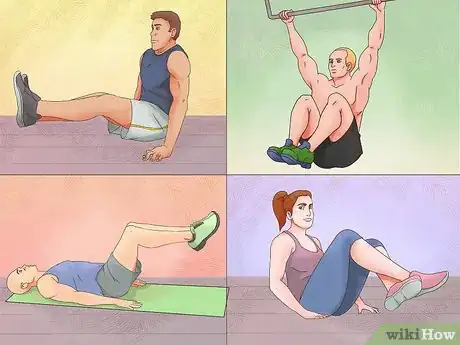

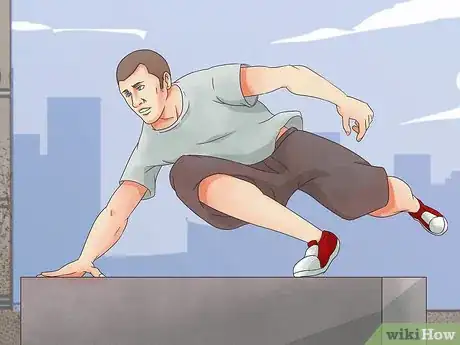














-Step-8-Version-2.webp)




































